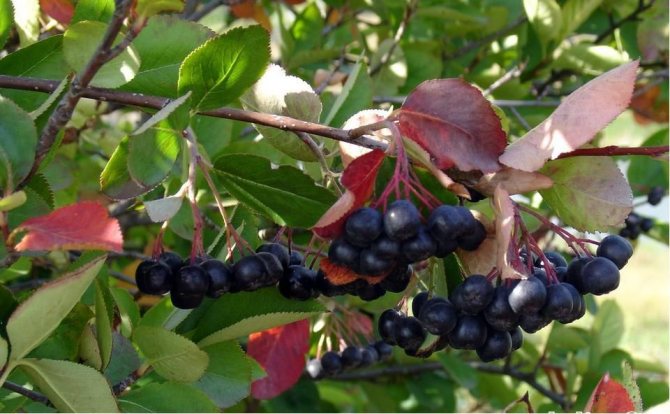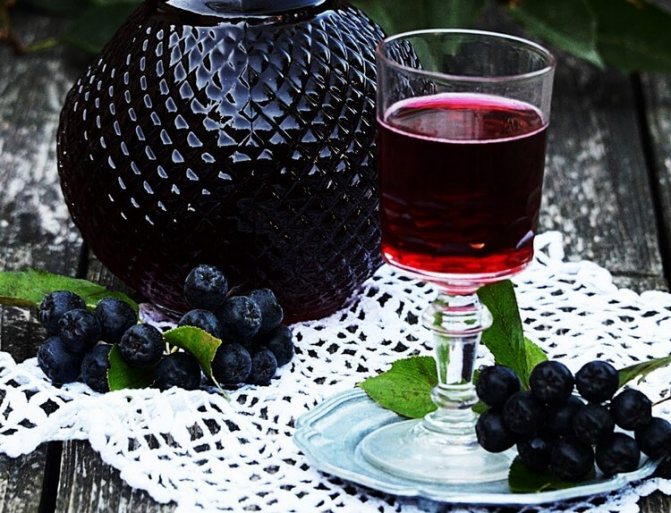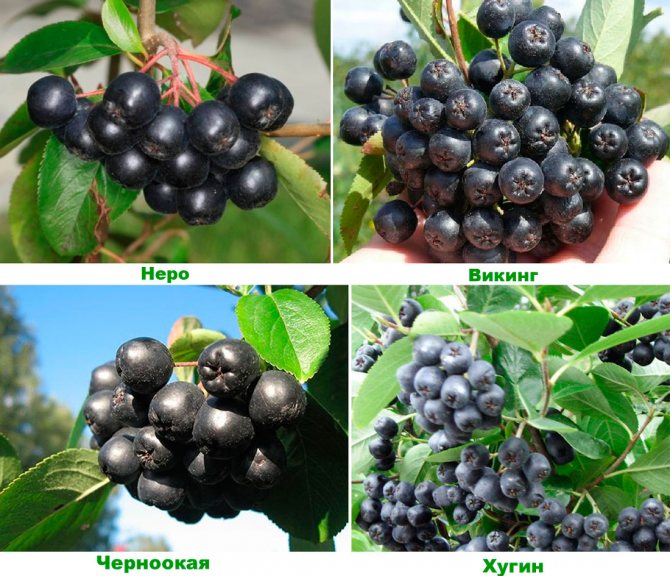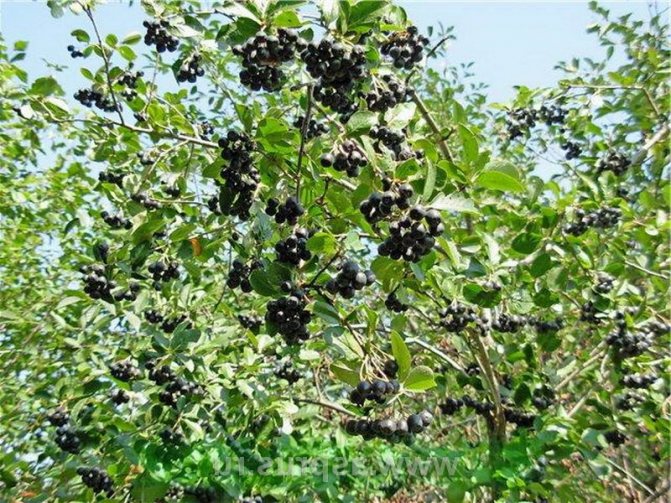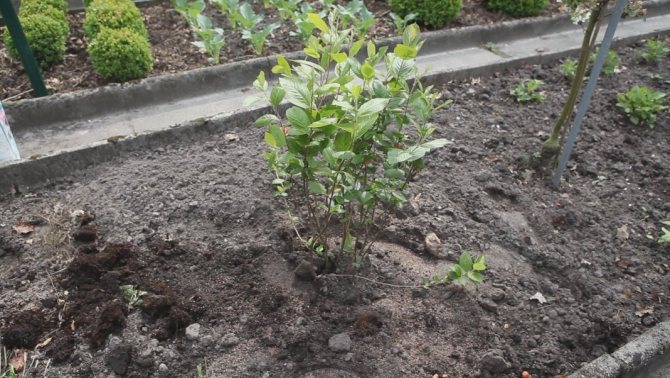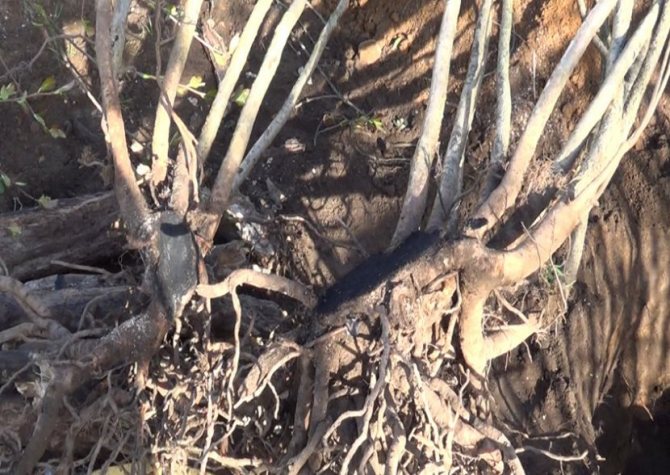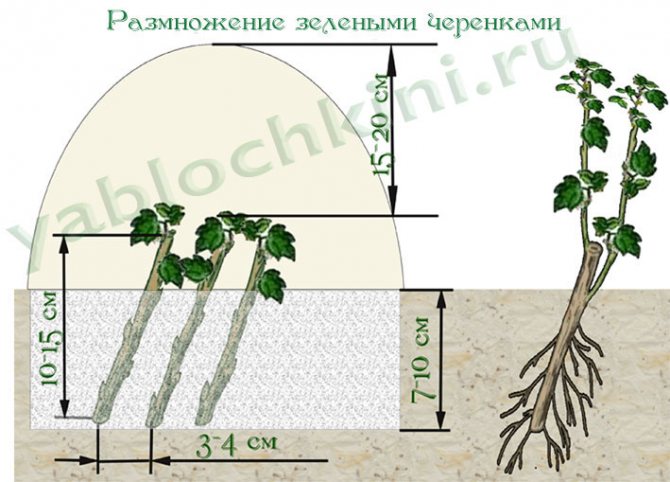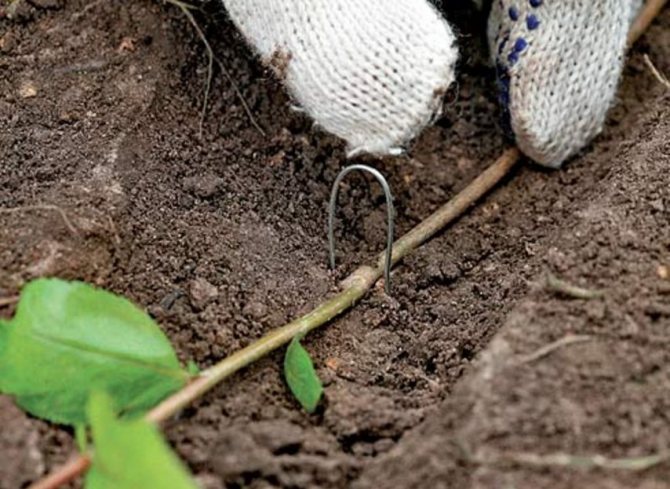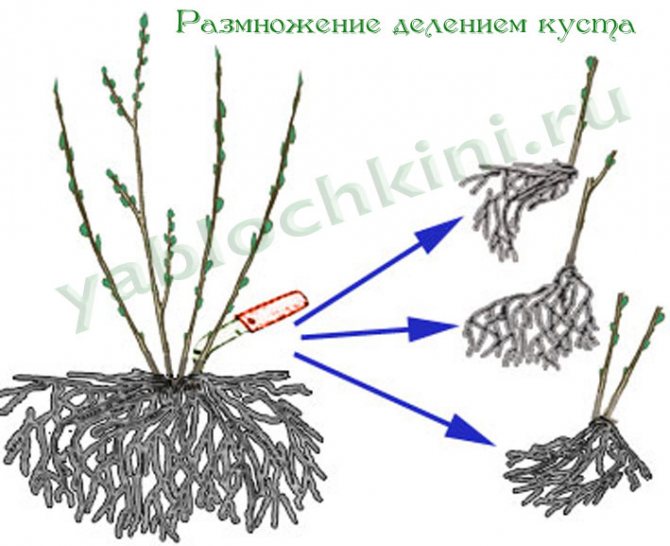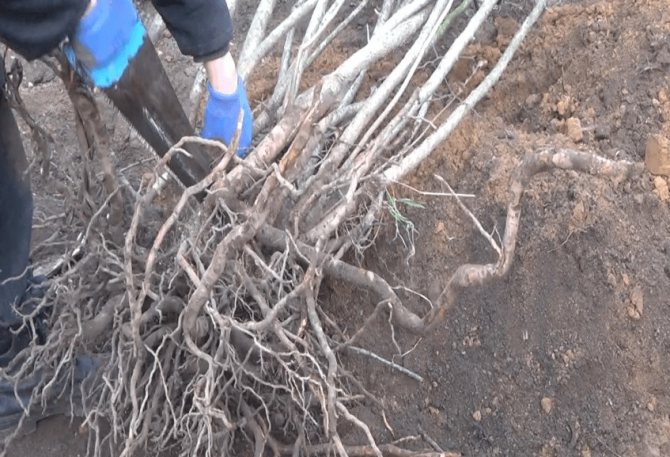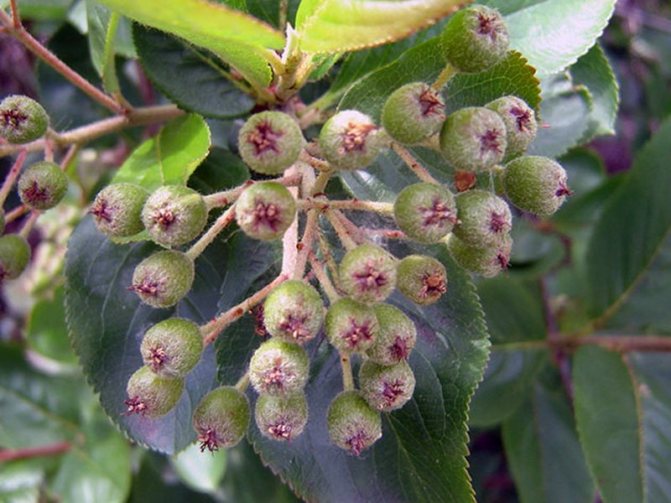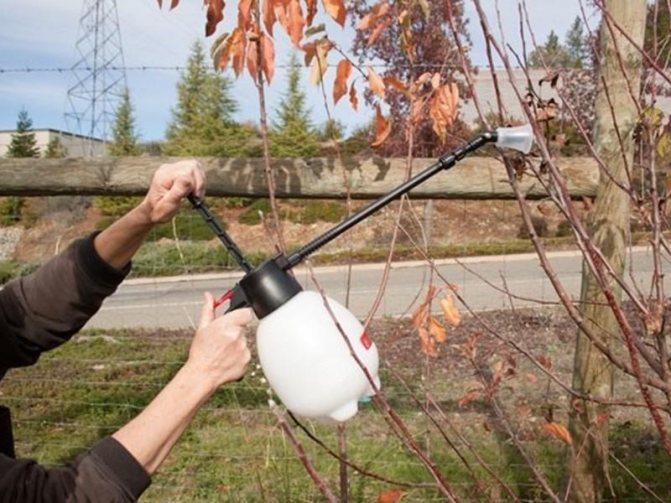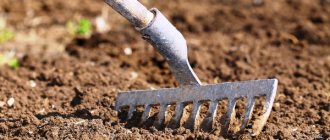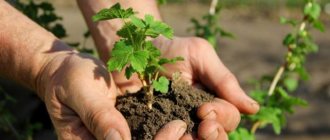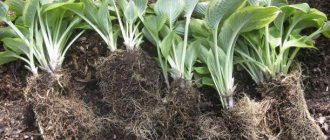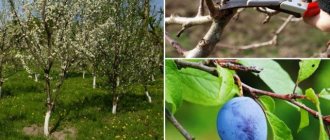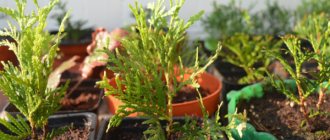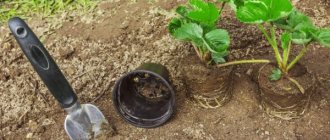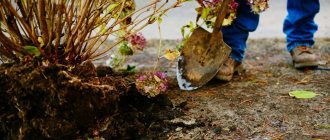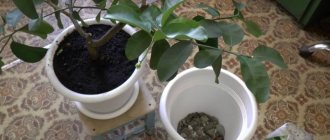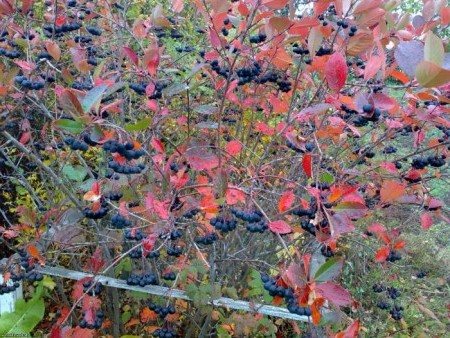
Chokeberry (chokeberry) is a shrub with erect stems and gray bark. In culture, chokeberry is of the greatest value. In mid-April, bushes from 1 to 2 m in height are still bare, only from brown-brown buds reddish tips of leaves break through.
It looks like a chokeberry
By the beginning of May, green buds are already visible on the shortened shoots among the leaves. With the establishment of warm weather, the leaves turn green and acquire an oval shape on short stalks, leathery, shiny on top, serrate at the edges.
The fruits are black, shiny, juicy. Ripen in the southern regions in mid-August. The size and shape of the berries are similar to those of black currants. The seeds of the chokeberry are very small. During the ripening period, the leafy outfit changes color. Yellowed and reddened leaves appear, which is very decorative in combination with black fruits.
Short description
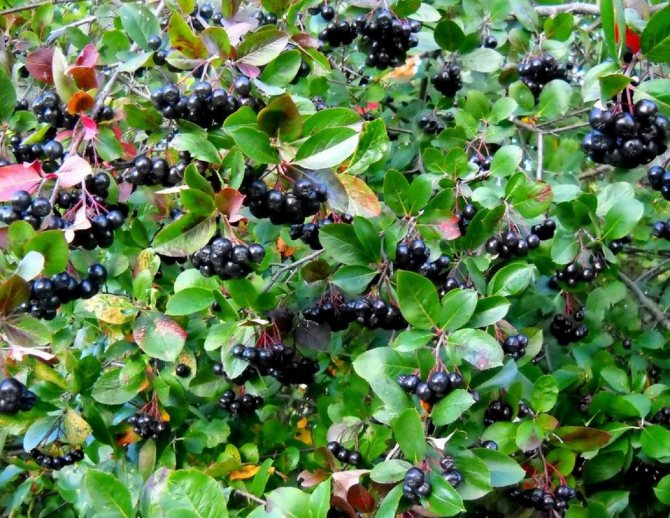

Aronia and common mountain ash are not relatives - they belong to different genera. But they have one family - Pink. Plant height - 1.3-1.6 m. Leaves resemble cherry in shape and color. The berries are round, black. The surface is shiny, bluish. The weight of one fruit is from 0.5 to 1.5 g. In varieties bred by selection, the fruits can be larger.
Fruits are a dietary product. 100 g of raw materials contains 52 kcal. The berries are harvested in the fall. They make preparations from them - they make jam, make compotes or wine. Also, the fruits are dried for future use - in this form they can be stored for about two years.
On a note!
Aronia is a powerful drug used in the treatment of hypertension, atherosclerosis, gastritis and many other diseases.
Preparing mountain ash for the winter season
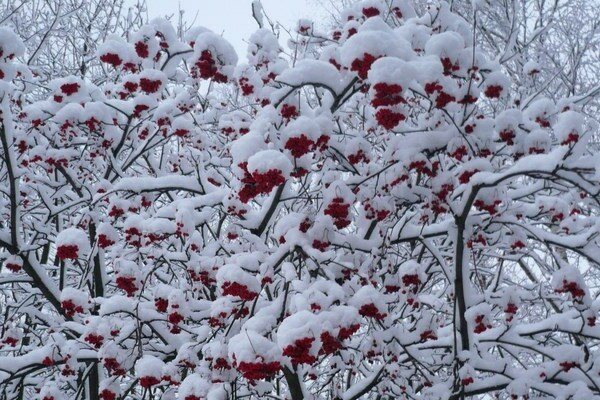

Only the planted mountain ash does not have time to fully become strong before the cold period sets in, for this reason it must be prepared for the winter season. For this purpose, certain work is being done.
The trunk is wrapped with burlap, after which they are insulated with spruce branches.
The bottom of the trunk must be additionally protected, it is buried with snow, make sure that the level of snow does not become less and does not expose the trunk.
In order to avoid burns caused by the sun, the trunk is whitewashed without fail.
Protect the trunk from rodents with specialized poisons scattered in the near-trunk circle.
Where to plant
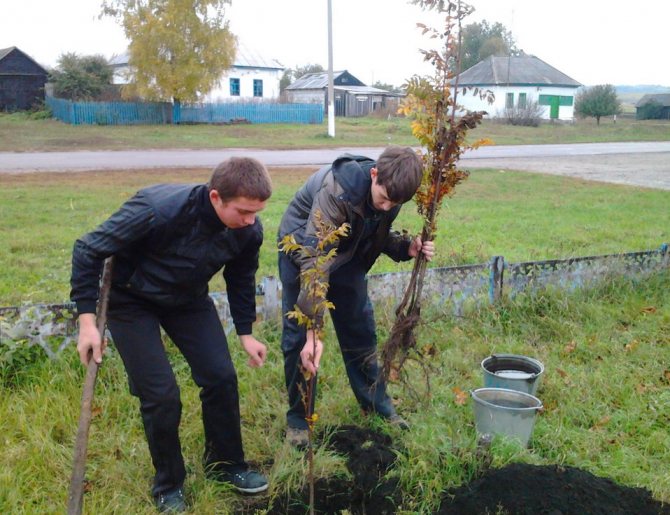

Any soil is suitable for growing black chokeberry - this plant is undemanding, it bears fruit well on any soil, with the exception of saline. But under certain growing conditions, chokeberry is especially productive.
Optimal growing conditions:
- areas exposed to the sun and well lit;
- optimal soils are moist loams with a neutral reaction;
- rowan roots are buried 0.6 m, so it can be grown in areas with high groundwater.
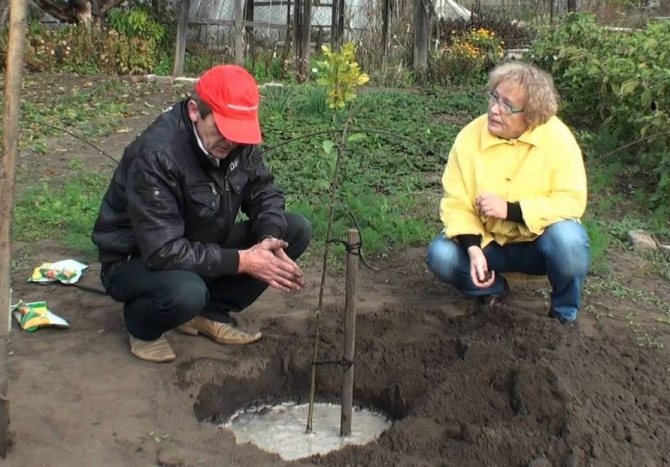

Growth forms and variants:
- In the form of a free-standing plant (tapeworm). There must be at least 3 m to structures and trees.
- In groups. Chokeberry is used to make hedges. They turn out to be quite dense and tall. Can protect the site from noise and dust. The distance between adjacent bushes is 0.5 m.
Blackberry looks beautiful both alone and in compositions. It is actively used in landscape design.The plant is especially beautiful during flowering and fruiting.
On a note!
A tapeworm is a single plant in the form of a tree or bush with a high trunk. Its main features are high decorativeness, exclusivity and originality.
Black chokeberry - beauty and benefit
Black chokeberry is a shrub that grows up to 3 m in height. It is winter-hardy, highly branched, has a superficial root system... Young plants are quite compact, but over time, the crown can grow up to 2 meters or more in diameter. Chokeberry blooms in late spring or early summer with white or pinkish fragrant flowers that attract a large number of insects. Fruits are purple-black with a bluish bloom, ripen in late summer. Chokeberry leaves turn purple-red in September. Against their background, black bunches of berries look beautiful, which are recommended to be picked after the first frost.
Photo gallery: chokeberry is beautiful in all seasons
In winter, chokeberry fruits remaining on the bushes are the best treat for birds
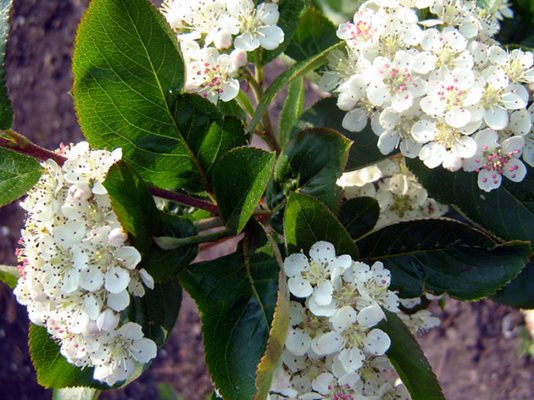

Chokeberry flowers very rarely freeze - late flowering protects them from spring frosts
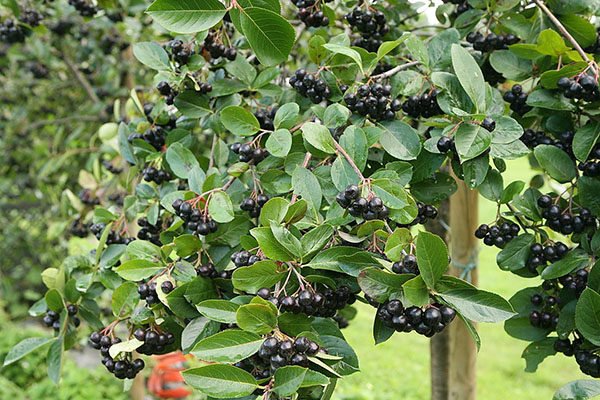

In summer, the bushes are very attractive: flexible shoots, leathery dark green rounded leaves, large clusters of shiny black berries
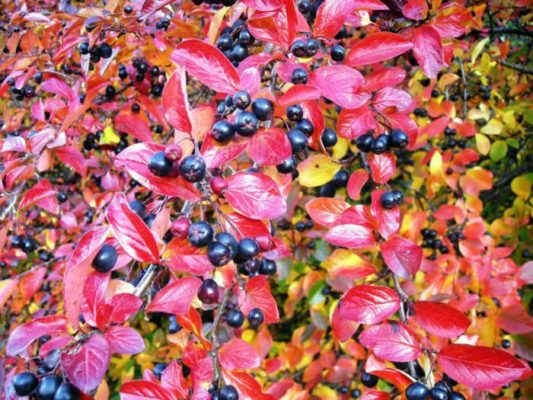

This plant is especially beautiful in autumn, when shiny black berries stand out against the background of purple-crimson foliage.
Confirmation that the fruits of chokeberry are valuable and useful for the body is their inclusion in the list of medicinal substances by the Ministry of Health.
Chokeberry berries contain a lot of iodine, as well as rutin, which increases the elasticity of blood vessels and slows down the aging process. They are useful for high blood pressure, help accelerate the treatment of nervous and cardiovascular diseases.
The usefulness and beauty of chokeberry are undeniable and testify in favor of its cultivation in garden plots.
How to plant
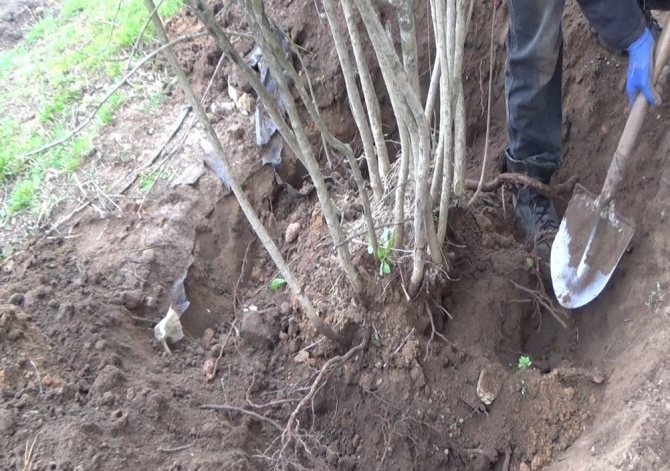

Planting and caring for chokeberry is practically no different from the agricultural technology of growing unpretentious fruit bushes. But there are nuances that you should definitely be aware of in order to get a healthy and abundantly fruiting shrub.
Aronia can be planted in spring or autumn. The landing dates are in April and October. Gardeners prefer planting black chops in the fall. During this period, it takes root better, and in the spring it grows rapidly.


Choice of chokeberry seedlings:
- roots - healthy with 2-3 branches, about 30 cm long;
- the roots are not allowed to be dry - the plant will take root with difficulty and grow weakened;
- in living seedlings, the inner side of the bark is green, in non-viable ones it is brown.
If the root system of the seedlings does not meet the requirements, it is better to refuse to buy them right away. But there is a chance for their recovery. The roots are immersed in water for 2-3 days, and they become elastic again.
Fall
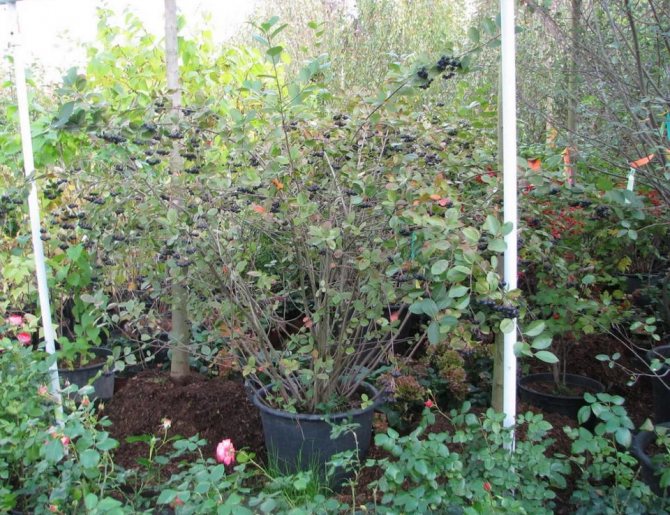

Before planting chokeberry, you need to prepare it. The roots of the seedlings are examined. If they find damaged, dried out or sick - cut off with a disinfected instrument.
How to plant chokeberry correctly in autumn:
- Dip the roots of the seedlings into a clay mash. It is made from water and clay - the ingredients are mixed in such a proportion so that the mixture has the consistency of sour cream.
- Dig a hole 50x 50 cm.
- Prepare a mixture of soil and fertilizer. Mix the fertile layer with humus (1: 1), wood ash (300 g) and superphosphate (150 g).
- Pour the resulting soil mixture into the hole. It should fill the groove by 1/3.
- Top up with fertile soil. The pit should now be half full.
- Pour 10 liters of water into the pit.
- When the soil has absorbed water, place the seedling in the center of the hole.Install it so that the neck is 2 cm above ground level.
- Sprinkle soil with soil over the roots and compact slightly.
- Water the blackberry seedlings again. Watering rate is a bucket of water per plant.
- After absorbing water, sprinkle the soil near the seedling with mulch. Layer thickness - 5-10 cm.
- Cut off the shoots of the planted seedling so that 4-5 buds remain on them. The approximate length of the shoots is 15-20 cm.
It is advisable to plant chokeberry in the absence of the sun. The pit is prepared 3-4 weeks before planting.
Spring
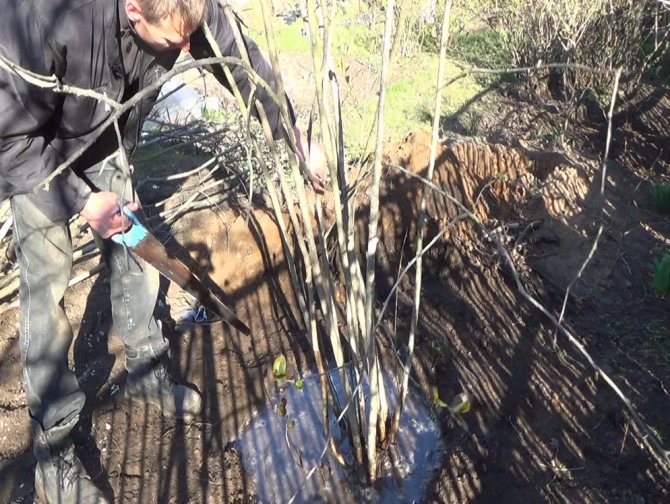

In the spring, chokeberry is planted using the same technology that is used in the fall. Spring planting is not as popular as autumn planting, but it also has a plus - high-quality pit preparation. It can be dug up and filled in in the fall, then the fertilizers are better absorbed and easily absorbed by the plant.
When planting black chokeberry in autumn, seedlings spend all their strength on rooting, in the spring they have to spend part of their strength on the formation of green mass - this is the main disadvantage of the spring event.
How to care for chokeberry in the garden
Spring care for chokeberry
In the 20th of March or early April, spring work begins with chokeberry. It is during these months that the bush needs to be pruned: both sanitary and formative, and it is also advisable for the tree to process all the stems with lime. Even at the beginning of April, the chokeberry bush needs to be prevented from various diseases and harmful insects, because they can be found in the cracks in the bark and in the very ground near the tree. With the onset of May, the weeds will climb; they must be removed immediately so that they do not grow. In the spring months, chokeberry needs to be fed with nitrogen fertilizers.
Summer care for chokeberry
In the summer season, it is necessary to look after chokeberry very carefully, because it is at this time that harmful insects appear and any plant in the garden or garden needs a thorough daily examination. It is important not to allow when the plant begins to get sick and harmful beetles appear on it. If, nevertheless, the tree was infected, you need to immediately treat it with chemical compounds. Since such a tree easily tolerates heat and can grow, in dry soil this does not mean that it does not need to be watered. After watering, the chokeberry bush needs loosening and weeding.
Read also: Cherry varieties - Syubarovskaya, Private house
Chokeberry care in autumn
Its berries ripen in the 20th of August, but experienced gardeners advise to pick the fruits only when the first frost occurs. When the dormant period comes, she needs to do sanitary pruning and pest treatment. If a young tree needs to be piled up and covered with spruce branches, and adult chokeberries do not need shelter.
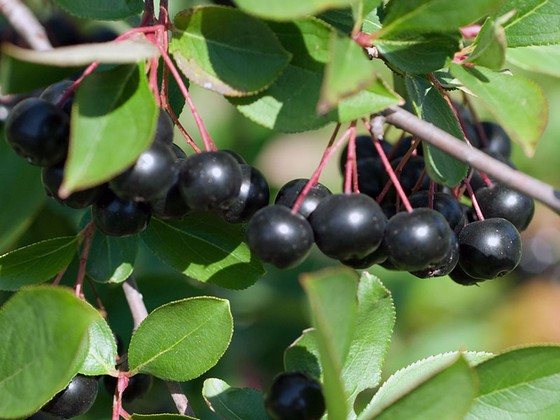

Chokeberry processing
Prophylactic treatments for insects and diseases should be carried out in early March before the buds begin to bloom. Chokeberry should be sprayed with 1% Bordeaux liquid. And in the autumn months, when the leaf fall is completely over, you also need to do preventive treatment.
Watering chokeberry
At the beginning of the growing season, watering is important, especially in the summer season in the sultry heat, if there is no rain. Another important stage in the tree period is the formation of berries. Under one chokeberry tree - three buckets of water. As soon as the moisture is absorbed into the ground, you can start loosening on the site. The very first time the soil needs to be loosened at the beginning of March, and then in the summer about five times. It is also especially important to loosen the soil next to the chokeberry, as soon as you have harvested the entire crop, and mulch the area with manure.
Growing and care
Aronia is a fruit crop and requires much less maintenance than many other shrubs. When growing black chops, special attention is paid to pruning, watering and feeding. If you properly care for these shrubs, they will quickly answer for taking care of high yields.
Top dressing


The amount, size and taste of chokeberry fruits depend on the dressing. If the plant is grown on fertile soils, then you can get by with a minimum set of fertilizers. In the spring, ammonium nitrate (50 g one bush) is introduced and the trunks are mulched with organic matter.
If chokeberry grows on infertile soils, it is fed not only in spring, but also in summer. In June, the plant is fertilized:
- mullein solution (10 l), prepared in a 1: 5 ratio;
- solution of poultry manure (10 l), mixed with water in a ratio of 1:10.
On a note!
If food is not enough, chokeberry can be fed in the fall. When all the fruits from the bush are collected, a mixture of two glasses of wood ash and 100 g of superphosphate is added.
Watering
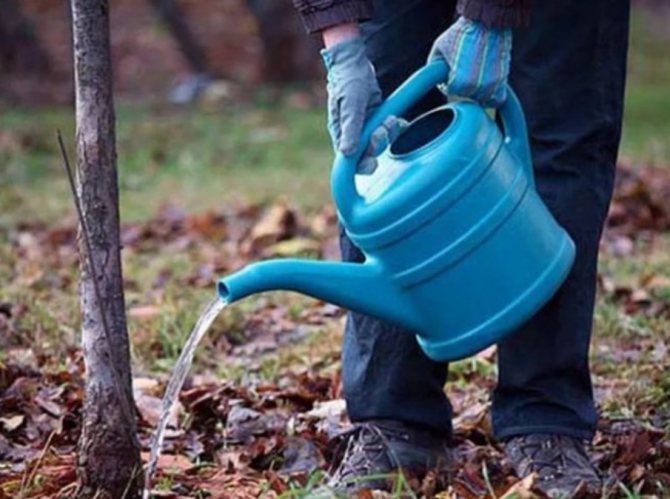

Watering for chokeberry is especially important in spring, when the shrub is just beginning to grow. After watering, the soil is loosened, simultaneously pulling out weeds.
Features of watering and loosening chokeberry:
- If the weather is hot and there is no rainfall, it is necessary to water the plant at the rate of 2-3 buckets per bush. The approximate frequency of watering is once a week.
- Chokeberry is poured not at the root, but in the grooves dug along the perimeter of the trunk circles. The distance from the center to the grooves is 30-40 cm.
- The first loosening is carried out in early spring. Over the summer, the soil is loosened several times.
- After harvesting, the soil is loosened for the last time and mulched. A thick layer of mulch will protect the blackberry roots from freezing.
Pruning


Pruning is a prerequisite for good fruiting of chokeberry. It is necessary to prevent thickening of the crown and increase yields. An uncircumcised blackberry stretches upward, grows in breadth, and fruits are formed only on the peripheral branches. Pruning is carried out twice a year - in spring and autumn.
Spring
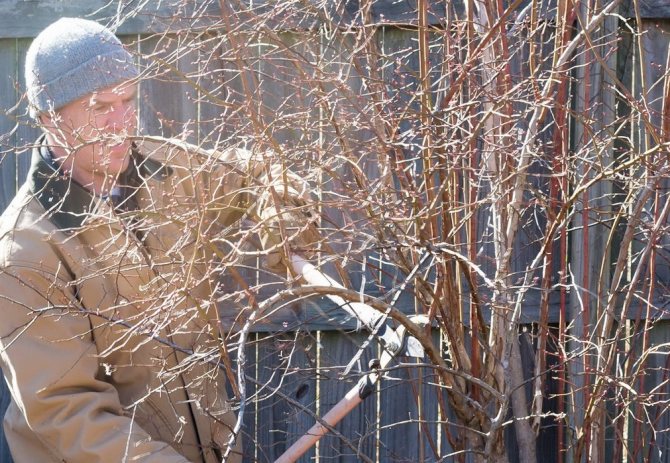

In early spring, blackberry seedlings are cut off, retreating from the surface of the earth 20 cm. In the 2nd year, 3-4 strong shoots are taken from the shoots and their height is leveled, the rest are cut off. This procedure is carried out every spring until the number of main branches reaches 10 pieces.
To prevent the crown of the shrub from overconsolidating, it is regularly thinned out. It is advisable to combine thinning pruning with sanitary pruning. All unhealthy, dried, damaged, as well as shoots on which fruits do not form are cut off.
Autumn
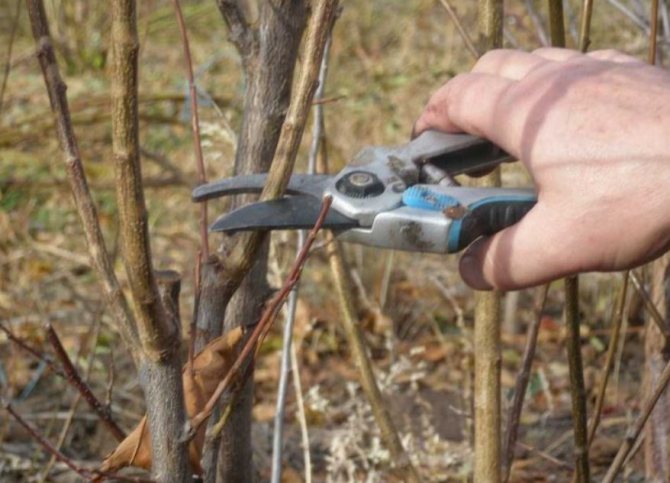

If necessary, sanitary pruning is carried out in the fall. Damaged branches may appear after harvest. Remove diseased and dried shoots.
The branches that thicken the crown can be cut in summer so that the shrubs do not waste energy on feeding them, but direct all their strength to the fruits. Slices of large branches are smeared with pitch to avoid the penetration of microorganisms into the plant tissue.
Rejuvenating
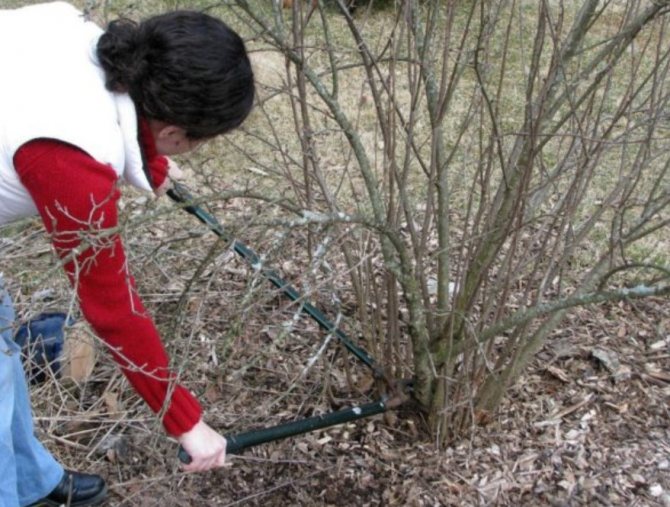

After 8 years of life, the branches are removed. And the pruning is done as close to the base as possible. A couple of shoots are left to replace - root shoots. Every year 2-3 adult branches are replaced. This strategy allows you to rejuvenate the shrub as gently as possible.
Old blackberry bushes are completely rejuvenated. They are completely cut off at the very root. A new shrub is formed from the new growth. The time for rejuvenation is spring.
On a note!
In the blackberry, only branches bear fruit, the age of which does not exceed 8 years.
Reproduction
Aronia propagates by seeds and vegetatively. Growers usually use vegetative propagation to get a new plant as quickly as possible. The most popular method is cuttings.
Seeds
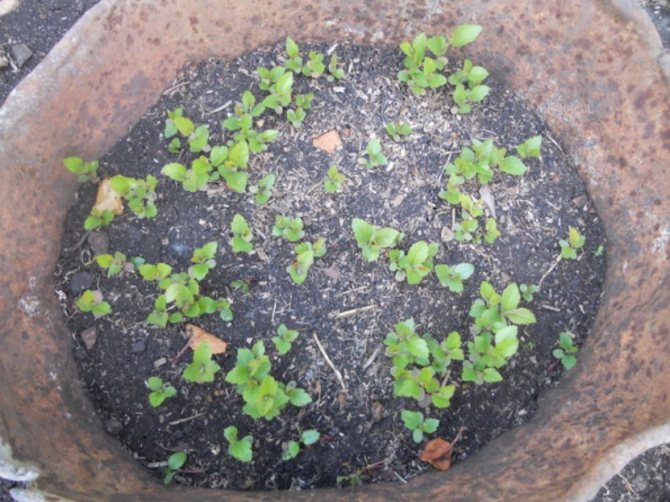

Seeds are extracted from ripe fruits. They are ground in a sieve and then immersed in water so that the pulp remaining on the seeds is separated.
Seed propagation order:
- The seed is stratified. The seeds are washed and placed in a container with disinfected sand - pre-calcined in the oven.
- Place the container with seeds in the refrigerator in the lower vegetable drawer.
- The seeds are planted in the grooves at the end of April. The depth of the furrows is 6-8 cm.From above, the crops are covered with soil and sprinkled with mulch.
- When the seedlings have 2 true leaves, thinning is carried out. There should be 3 cm between neighboring plants.When 4-5 leaves appear, re-thinning is carried out, increasing the intervals to 6 cm.
- The next thinning is carried out next spring. This time, gaps of 10 cm are left between the grown young growth.
- In the fall of the 2nd year, young seedlings can be transplanted.
During the cultivation of seedlings, the beds are watered, weeded and fed. Top dressing is applied once - in the spring it is watered with diluted manure.
Cuttings
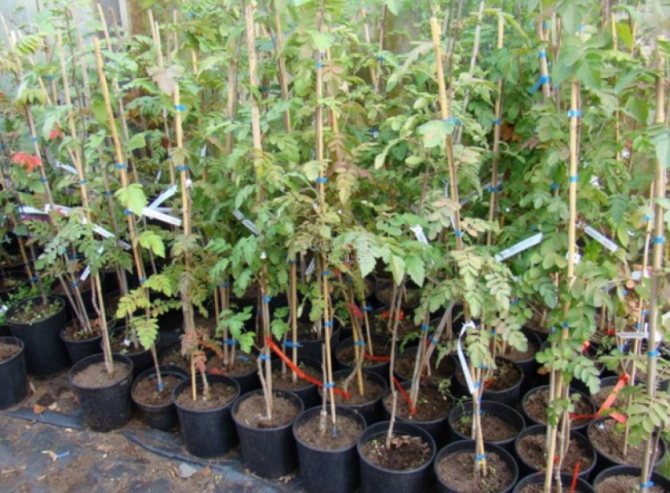

The plant is propagated by green and lignified cuttings. They are harvested at different times, the first in June, the second in September.
Reproduction of chokeberry by different types of cuttings:
| Parameters | Green | Lignified |
| Requirements for cuttings | Length 10-15 cm from the tops of the shoots | Length - 15-20 cm (5-6 buds). Cut from the middle of 2-4 summer branches |
| Substrate | Mix garden soil with wood ash and compost | Coarse river sand. Layer thickness - 10-15 cm.Base - clean and loose soil |
| Environment conditions | Optimum temperature; + 20 ° C. Constant humidity | |
| Planting and rooting | Landing angle 45 degrees. Spacing between cuttings 4 cm | Planted at an angle of 45 degrees. The interval between cuttings is 10-12 cm |
| Care | Moderate watering, loosening, weeding, hilling | |


The survival rate of cuttings is high - 70-100%. They are fed with ammonium nitrate (30 g per 10 l of water) and slurry. Transplants of seedlings to a permanent place are carried out in a year, for the next autumn.
Root offspring
Chokeberry produces many root suckers that can grow into a new plant. The shoots are separated with a shovel from the mother bush along with the roots. The shoot is cut so that about 4 buds remain on it. Further, the plant is looked after in the same way as for ordinary seedlings.
Layers
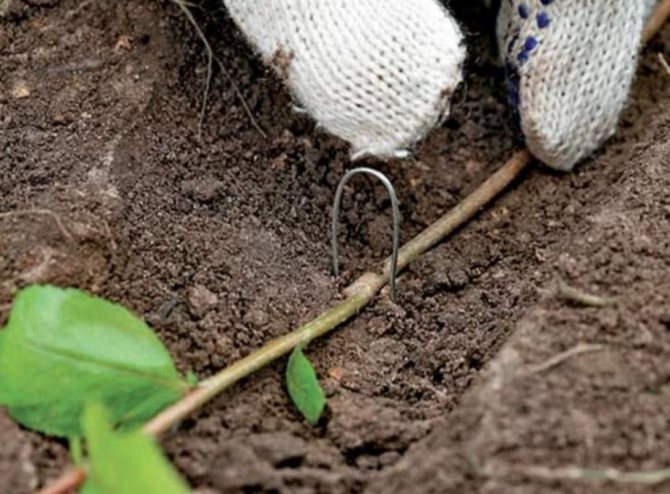

Under the bush in the spring they dig up the soil 20 cm deep. The strongest shoots are selected. They are bent to the ground and secured with staples. The tops of the shoots are pinched. They are then looked after as if they were mature shrubs.
When the shoots from the cut reach 12 cm, they are covered with humus. Plants continue to grow, and the dusting is repeated 3-4 more times. Separation and transplantation of "daughters" is carried out next spring.
By dividing the bush
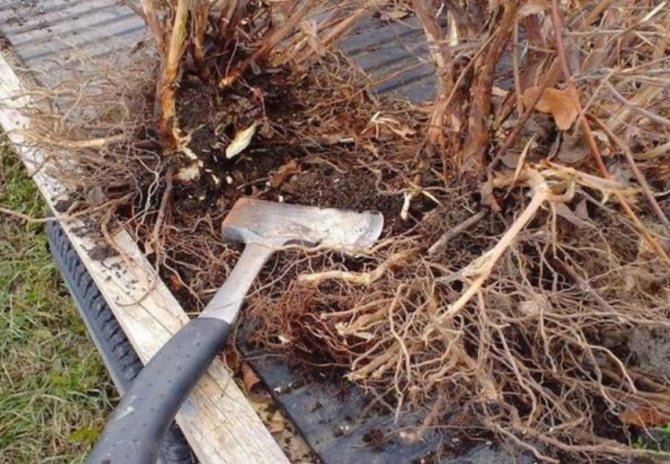

In chokeberry, the roots are concentrated at a depth of 60 cm, so it can be dug up and divided into parts. The resulting shares are planted, receiving several new bushes at once. When separating, old shoots are removed from the resulting parts. Reproduction by division is at the same time a rejuvenating procedure.
Attention!
Only generative reproduction - by shoots, division, layering, allows you to preserve the varietal characteristics of the plant.
Vaccination


Chokeberry is inoculated in the spring, until sap flow has begun. Rowan seedlings serve as rootstocks. Splitting is performed on the stock with a sharp tool, and the scion is cut with a wedge. Shoots are tightly combined and wrapped with foil to create a greenhouse effect. after a month, the "winding" is removed.
Chokeberry grafting
The vaccination procedure is carried out in the spring. When propagating black chokeberry by grafting, a rowan seedling is used as a rootstock.
The rootstock shoot is cut at a distance of 12 cm from the soil surface, a deep incision is made at the cut, splitting for the scion. The scion shoot is cut in a wedge-shaped manner under the split. After the scion has coincided with the stock, the grafting site must be treated with garden varnish and wrapped with foil.
For black chokeberry, when grown by grafting, a greenhouse effect is needed: use a plastic bag, securing it under the vaccination site. Remove the package after thirty days.


Attention! The plant, after seven years of fruiting, needs to thin out the crown. Older trees and shrubs are pruned to soil level, encouraging them to grow new shoots.
Transfer
You can transplant chokeberry bushes even in adulthood.Chernplodka tolerates transplanting well, the main thing is to transplant the plant quickly and correctly, preventing wilting.
Transplant timing


You can transplant the blackberry in spring or autumn. Preference is given to an autumn transplant. Shrubs, having grown stronger over the summer, are better able to survive the stress associated with a change of place. To make the plants adapt faster, their shoots are shortened by half and the leaves are thinned out. Removing some of the shoots reduces the load on the root system, and the shrub takes root faster.
In spring, the root system may not be able to cope with the double load, and the plant will slow down its growth, weaken, and take root for a long time. If the transplant is still carried out in the spring, then it must be carried out before the start of sap flow.
Transplant procedure
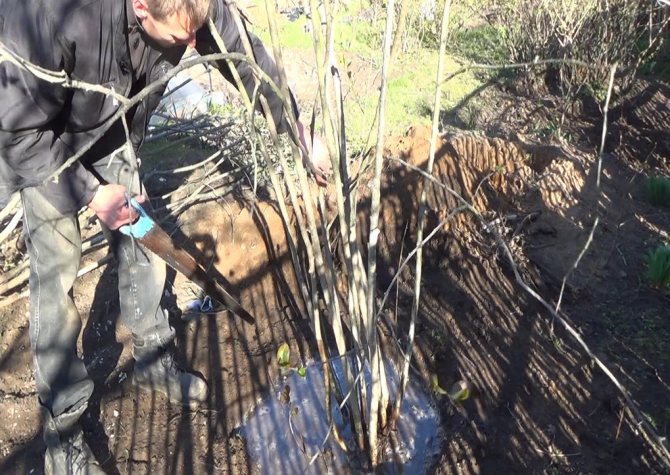

You can transplant both a young and a very adult black chokeberry. The main thing is to move the bush to a new place with a lump of soil. Transplanting allows you to rejuvenate the chokeberry, reduce the load on the roots and get several plants from one at once.
Transplant procedure:
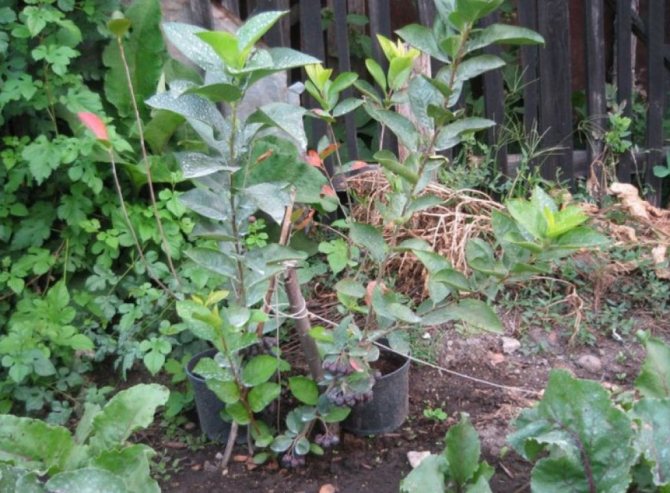

- Dig a ditch 0.5 m deep and 0.25 m wide in a circle.
- Use a crowbar or shovel to lift the roots of the plant and move them out of place.
- The bush can be placed on a bag or thick film and carefully transfer it to a new location. There must be a landing pit prepared in advance.
- Place the bush in a hole, water and cover with fertile soil.
- Cut off damaged and dry branches near the bush. Sprinkle the slices with charcoal.
If the shrub is large, it can be divided into parts. The root system is cleared of the ground and the bush is cut with a sharply sharpened tool. Each division should have healthy roots and 3-4 shoots.
Attention!
Transplanting the chokeberry, in a new place, they retain its previous orientation with respect to the cardinal points.
Why transplant rowan
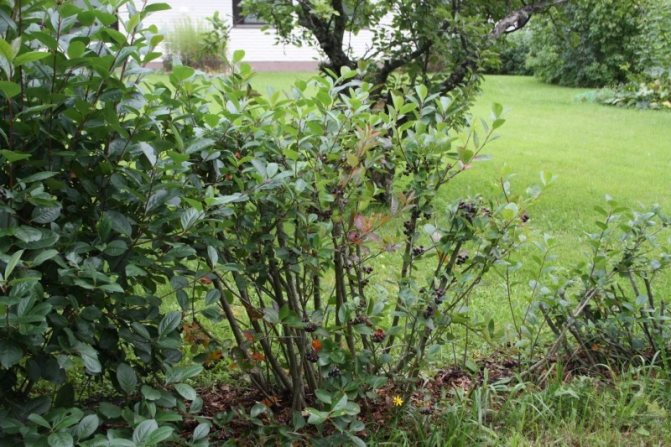

Even more, the tree has to be moved to a new location. Sometimes gardeners, instead of buying a seedling, go to the forest and choose a bush they like. The fortified plant is quickly accepted. Wild chokeberry is generally more disease resistant and less afraid of pests. Besides, independent "extraction" of a plant, in contrast to buying, will not cost a single ruble. The planting process will not differ from the standard one. The main thing is to choose a plant that is not infected with a fungus.
A rowan transplant will be needed if the place where it was planted was not designed for a large tree. Branches touching electrical wires create a flammable situation. If you don't feel like pruning, the plant needs to be moved further away from the transmission line. You will also have to choose a new place for rowan if it is located too close to the house. Roots can damage the foundation, shortening the life of the building.
Sometimes a young tree begins to die after planting. If even proper care does not help correct the situation, the reason may be in the soil. By its nature, mountain ash is an unpretentious plant that feels good in almost any soil. Aronia is planted in peat bogs, chernozem, sod-podzolic and gray forest soils. However, the seedling will quickly die in the swampy area. If the leaves wilted, and the branches began to dry, the plant must be moved to a more familiar soil. Then there are chances that the mountain ash will get stronger and grow into a large fruit-bearing tree.
Features of growing in the regions


The yield of chokeberry depends on the region of cultivation. The plant shows good yields in central Russia, Siberia, and the Urals. Each region has its own nuances of agricultural technology.
Features of growing chokeberry in:
- Central region and Moscow region. Here the blackberry is especially productive. The climate here is relatively mild compared to Siberian conditions. The greatest danger is winter without snow. The roots of the plant freeze out at minus 11 ° C.
- In the Urals, Siberia, Yakutia. The shrub can tolerate frosts down to minus 35 ° C.To prevent the shoots from freezing, they are bent to the ground in the pre-winter period. It is necessary to apply nitrogen fertilizers in a timely manner. An overabundance of them can prevent the bushes from preparing for winter. As a result, the root system of the chokeberry may freeze or even die. The most common disease in these regions is brown spot.
- Primorye. Aronia is grown here on moist soil, loamy or sandy loam. If the summer is dry, the fruits become small, tasteless, and less juicy. In Primorye, chokeberry grows only when the roots are warmed. The trunks are covered with compost or humus. Layer thickness - 5-10 cm.
Advantages and disadvantages of an autumn transplant
When transplanting chokeberry from the forest in autumn, not only climatic conditions, but also the condition of the plant are taken into account. Autumn planting brings with it positive and negative aspects.
The advantages of transplanting rowan trees from the forest in the fall include:
- after planting, the trees will begin to grow three weeks earlier than in spring;
- less time is spent caring for the shrub, since the level of moisture in the earth and temperature is controlled by nature itself;
- saving time, since there is less work in the garden in autumn than in spring;
- at this time, you can appreciate the root system of the tree and understand how it will develop in the future.
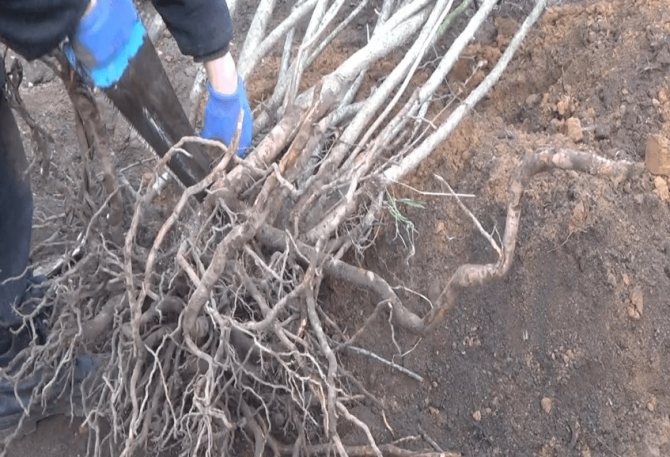

The downside of autumn work is:
- if the region has frosty winters, then there is a possibility of freezing of the root system;
- strong winds can harm shrubs, break off weak and young branches;
- an attack of rodents is possible, which actively attack the garden in the fall.
Rodents may not completely destroy the tree, but they will make it so that it does not bloom in the spring. This means there will be no harvest.


Testimonials
Valentina, 54 years old
The blackberry turned out to be much more resilient than the description promises. When the shrubs matured, I learned how the chokeberry grows. It grows well in partial shade. The afternoon sun is enough to get the harvest. But the bushes react to the lack of moisture with a drop in yield. The berries become smaller and lose their taste. The plant must not only be watered, but constantly moisturized. Chokeberry grows best in the lower part of the site.
Vasily, 56 years old
Aronia produces a hedge that is tall and beautiful. Blocks my site from the neighboring one. Bushes grow in a dense wall. A height of about 2.5 cm, chokeberry is also grown in the form of dwarf standard trees. True, such trees have a low yield, and the fruits are smaller and more acidic than those of the shrub form.
With proper planting and care, in the open field, you can easily get large harvests of chokeberry. Strong, hardy and versatile, this plant can be one of your favorite crops in your garden.
How to propagate black rowan by root suckers
Planting root suckers is an equally popular method to propagate chokeberry. The bushes give a lot of growth every year, so there is no shortage of planting material.
The young shoots of the black chokeberry are separated from the mother plant with a shovel. Each bush should have its own roots. Before planting, shoots are shortened by several buds, after which they are placed in the chosen place.
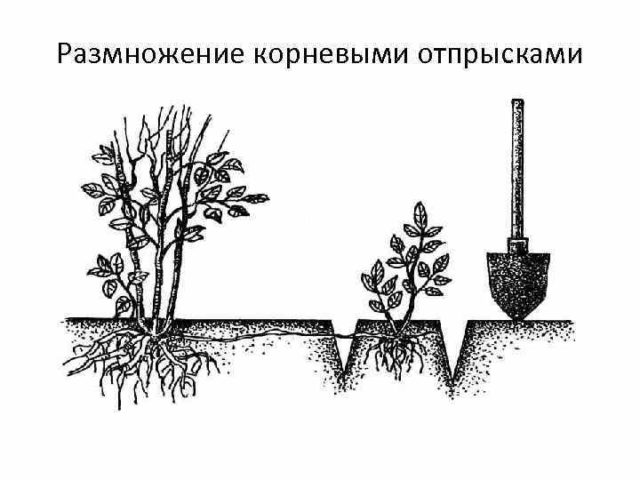

For planting blackberries, a sunny area is allocated. There are no special requirements for the soil, but the shrub does not develop well on acidified soil. Aronia is so unpretentious that it calmly tolerates the proximity to groundwater. It is often used as a hedge.

